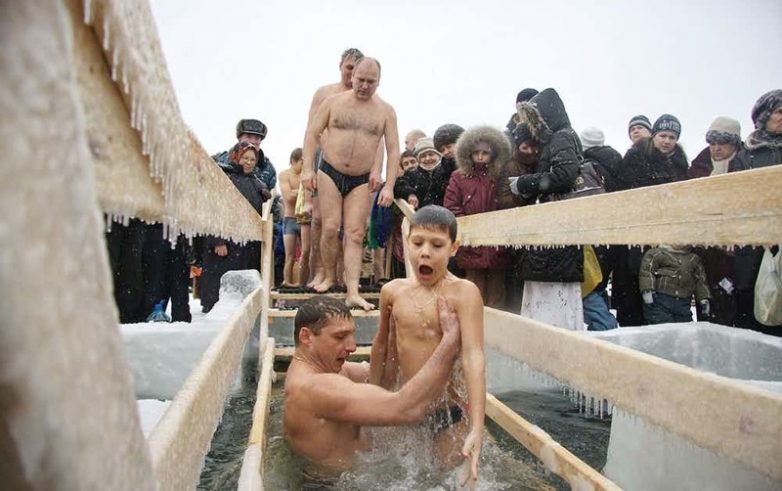Our roots. Made in Siberia. hedges in siberia
Hedges are an excellent protection against wind, dust and noise. At the same time, they can decorate any, even the most unsightly corners and buildings, harmoniously fitting them into the landscape and giving the site naturalness and comfort. Small birds settle in dense thickets with pleasure, pleasing to the ear and ridding your garden of pests.
Hedgerows are nothing more than plants planted tightly in a line. They are of natural shape and sheared, single-row and multi-row.
Separate hedges by height:
1) Low or curbs (up to 1m.)
2) Medium (up to 1.5 m.)
3) High (up to 2.5 m.)
4) Living walls (over 2.5 m.)
Borders.
For low hedges, in Siberian conditions, the following plants can be used:
1) For molded: purple willow, cinquefoil shrub and Dahurian, golden and alpine currant, Japanese quince, common barberry and Thunberg, gray rose, low almond.
2) For not sheared, flowering: Japanese quince, low almond, Japanese spirea, cinquefoil shrub and Dahurian.
Medium height hedge.
Plants used in Siberia:
1) For molded: yellow acacia, brilliant cotoneaster, viburnum viburnum, Hungarian and common lilac, Tatar honeysuckle, white sod, Ginnala maple, silver sucker, small-leaved linden, elms, etc.
2) For flowering, a hedge of: rugosa roses (wrinkled), gray roses, barberries, medium spirea, Japanese, Thunberg, mock orange, common lilac is suitable.
Tall hedges.
1) Molded high hedges: irga, Ginnala maple, Tatar maple, berry apple tree, Ussuri pear, Siberian fir, Siberian spruce, blood-red or Siberian hawthorn, laxative buckthorn, small-leaved linden.
2) Suitable for not sheared: hawthorn, red elderberry, Tatar honeysuckle, common viburnum, Gordovina viburnum, Ginnala maple, viburnum vesicle, rowanberry, common and Hungarian lilac, coronal mock orange.
Green walls.
D
For green walls, they use: small-leaved linden, pedunculate oak, elms, apple berry, Ussuri pear, spruce, fir, etc.
With the use of supports, creepers are widely used: girlish grapes, Amur grapes, honeysuckle capricole, Chinese magnolia vine, clematis, hops, kirkazon.
Landing and care.
Considering that hedges are planted for a long time, it is necessary to carefully prepare the soil. Apply organic and mineral fertilizers.
Plants with loose branching, such as yellow acacia, are planted in two rows in a checkerboard pattern. With dense branching planted in one row. The age of planted plants should not exceed three years. The distance between plants is from 20 cm, between rows - from 30 to 80 cm.
In the first year after planting, care for hedges comes down to the timely removal of weeds, regular loosening and watering. In the second year after planting, the plants begin to cut. They cut hedges twice a year: in autumn (during leaf fall) or in spring (before bud break) and in summer (end of June - beginning of July). Only a third of the annual growth should be cut.
The team of the Sib.fm online magazine has developed symbols about Siberia and intends to produce products using it - T-shirts, sweatshirts, bags, badges and anything else, in general.
Currently, more than a dozen visual images are ready, united by the slogan "Made in Siberia" (with a version of Made in Siberia - for sister cities in South America and Africa).
"AT recent times the desire of the inhabitants of Siberia for self-identification, the search for images and meanings with which to express oneself, was quite clearly indicated, and the existing symbolism is not good enough to be put on, for example, a T-shirt, worn everywhere or given as souvenirs. Therefore, we decided to work independently in this direction, came up with a unifying slogan, ideas for illustrations and began to visualize,” said Elena Shkarubo, head of the Sib.fm project.
Products with Siberian symbols will be presented on the website of the Sib.fm online magazine. All funds from the implementation will be directed to the development of the project - attracting new journalists, photographers and designers, developing the site itself, creating special projects.
The project "Made in Siberia" is not a trade in souvenirs. In fact, we are announcing a fundraiser for independent journalism in a good mood.
“The Sib.fm online magazine needs the support of readers and sympathizers: we want to preserve the independence of the project, and we hope that the audience will accept the same in this.”
We donate T-shirts in Novosibirsk when you make a voluntary donation in the amount of more than 2,000 rubles - everyone can determine the measure of their support for themselves. An exception in the first batch was made for the visual image "-36.6" - we give a T-shirt with this print to those who support the project in the amount of more than ten thousand rubles. If you need to specify contacts for feedback.
“A series of prepared images reflects our perception of Siberia,” Elena Shkarubo explained. — We are ironic, but good-natured, stylish, but in felt boots, we don’t want to go anywhere, because our place is here — in these cold places. But we do not despair, we are hardened, we just clench our teeth tighter and come up with interesting activities for ourselves. In general, we are cool guys, and there are actually a lot of us here.

Worked on the idea: Andrey Ksenchuk, Mila Redko, Lena Shkarubo, Zhenya Yukechev
We are currently preparing for the release of the first batch of t-shirts. If you are ready to support our project, please fill out the form below. Indicate the number and size (S, M, L, XL) of T-shirts, the image you like (snowflake, felt boots, earflaps, mittens, -36.6), as well as the amount that you are ready to allocate for the development of the Sib.fm online magazine. Be sure to leave a phone number for feedback!
Today we often meet hedge owners of private houses. In Europe and America, it is a decoration of the yard. And here it has a protective function, especially if there is a highway or railway nearby. But now it is increasingly an aesthetic function. In addition, it carries protection against air pollution, keeps windy gusts and becomes a stub from the side of the street.
What is the point?
When owners start thinking about where to place a live fence, they have to think about additional questions. For example, how to arrange a comfortable life for plants in the winter. But everywhere there will be such a corner in the garden, where the wind blows constantly. In winter, this is problematic, since the roots of many trees and shrubs on the site, for example, strawberries, freeze strongly. But at the same time, there should not be completely deaf fences, since there must be a certain air circulation. The winds will be much weaker only when they are free to pass through at least small holes.Experienced gardeners call a hedge the best candidate for wind protection and snow retention. And in Siberia, this is a very big problem, because the winters there are very snowy. If you build such a protective structure on your own site, then you can be sure that the snow cover on the site will fit evenly. From which it follows that the fence will not only be the pearl of your yard, but will also be very useful and make your life easier for the better. Therefore, there will be much less work.
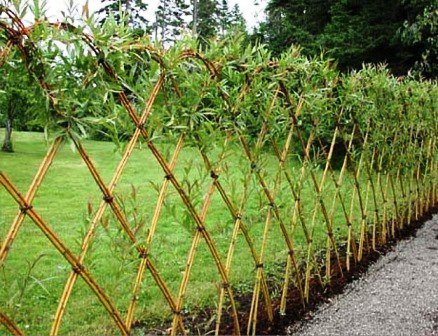
The question often arises of how to green up cities, especially large metropolitan areas, in order to turn them into a living fairy tale. But at the same time it is necessary to decide which species are best suited for this. This case should not only be beautiful, but also carry certain protective functions. Here we must also take into account the fact that takes into account the wintering of these plants. It is highly undesirable to plant those trees that bear fruit or can only grow in complete solitude.
Such trees and shrubs are very fragile in nature and can die from the slightest damage or sudden changes in temperature. One dead plant can lead to the reconstruction of the entire territory. But everyone is well aware of how long it takes and how much money and effort it requires. For cold nature, there are plants that cannot be compared with European and American counterparts.
free trees
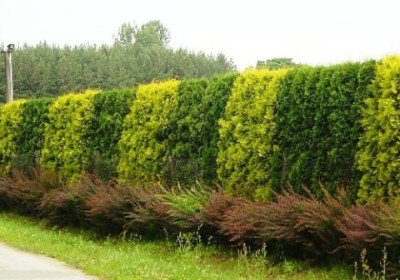
Those fences that grow freely are usually located on the edges of gardens, cottages and private houses. They become part of a living composition. To create such beauty, you need to plant next to them those shrubs that bloom and bear fruit. They are pleasing to the eye - this is the first advantage. Secondly, they bear tasty and healthy fruits.
Perhaps the most resistant plant in Siberia can be called the black chokeberry. It forms a dense crown and contributes to the creation of a high fence, which reaches two and a half meters. Its flowering period falls on the autumn period, when its leaves turn crimson. I think everyone knows about the benefits of its fruits.
If you do not want a very high hedge, then you can recommend the golden currant. In spring, it is covered with charming flowers, and in summer it brings a lot useful berries. Barberry shrubs are ideal because they have strong and impenetrable branches due to sharp thorns. You can admire such a fence all year round, since its fruits are preserved until hard frosts. If you want a low hedge, then you can advise Potentilla (look at the photo on the Internet). Her plus is that she pleases with her flowers all summer.
As for the design?
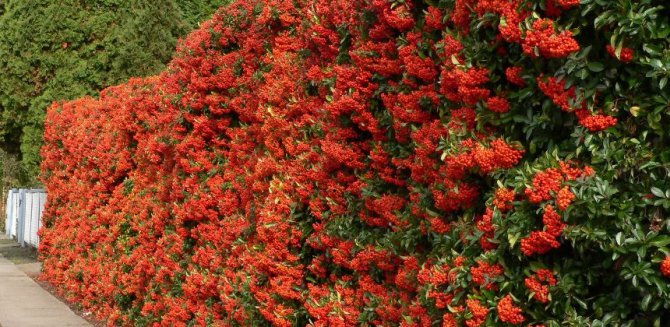
With those plants that require a haircut to give beauty and shape, the situation is a little more complicated. Also, their problem lies in the fact that they require special protection against external stimuli. And they have weaknesses. Frosty air, air pollution and burns, unfortunately, have a destructive effect on them. In other words, they must be protected.
A worthy candidate for the formation of such a fence is hawthorn. It is resistant to climate, frost. He also tolerates a haircut favorably. Well after it grows. And the thorns on its branches and trunks are an excellent defense against outsiders.
Experienced gardeners consider brilliant cotoneaster no less worthy. He also does not neglect cutting with secateurs, the density of his crown protects the shrub itself from frostbite, even after the hardest frosts. He is a recognized protector, as well as the best decoration any garden. And the fruits that it bears will contrast beautifully with its leaves. Your yard will look like a small living fairy tale.
Derain white is also a fairly reliable partner due to its ability to endure severe winters. It is also one of those species that likes to be sheared and is not afraid to be touched with pruning shears. In addition, he is pleasing to the eye and not whimsical at all. It has a wide distribution, it can be found everywhere. Its foliage and fruits should be familiar to absolutely everyone.
Let's not forget also about the owners of needles. Spruce is ideal here, which form an impregnable wall. Its great advantage lies in the fact that it looks aesthetically pleasing both in summer and in winter. And junipers are not recommended to be used as a hedge, since they practically do not resist severe frosts. They have delicate bark and foliage, they burn in the scorching sun.
A little about grooming and haircut
Free hedges should be planted in a single row. There should be thirty centimeters of free space between two trees. And for shrubs - one meter. This is done because after shearing and watering, the plants rise more intensively and eventually form a blank wall. This wall is the protection of your yard.Trimming the hedge after you have planted the desired plants helps to form an already solid shrub or tree. Experienced gardeners recommend cutting very young trees and shrubs, leaving ten centimeters above the soil level. By this you stimulate accelerated growth and the birth of new young shoots. Within four years, it is also recommended to remove a third of young branches. This is also due to the stimulation for the accelerated growth of new branches on the sides and the formation of a dense, strong and healthy crown.
After the previous procedures, you can begin to form a hedge. As soon as you achieve the results you expect, then you need to do a little trimming of the bushes. This is done so that it does not begin to spread in all directions, but keeps a beautiful even shape. Agree, such bushes look like a real work of art. When the hedge is already formed, you can already take a pruner twice every three months.
Yes, I don’t care about the frost - I grew up in Siberia!
Man has an amazing ability to adapt even to the most severe conditions. environment. So even in Siberia, people were able to get comfortable. This region is famous rich history, unique nature and the most beloved dog breed in the world. I bring to your attention some interesting facts about Siberia that will expand your horizons.
15. Siberia covers most of the territory of Russia
The area of geographical Siberia is 9.8 million km² (about 57% of the territory of Russia). For comparison: the area of Canada is 9.9 million km².14. The deepest lake on the planet is located in Siberia.
Lake Baikal is located in the southern part of Eastern Siberia. It is the largest natural reservoir of fresh water, with a surface area equal to that of the Netherlands. Moreover, the water in the lake is so clear that you can see stones and other objects at a depth of 50 meters.13. Tunguska meteorite
On June 30, 1908, a meteorite fell in the region of the Podkamennaya Tunguska River, which flows through the Central Siberian Plateau. The power of the explosion is estimated at 40-50 megatons, which corresponds to the energy of the most powerful of the detonated hydrogen bombs.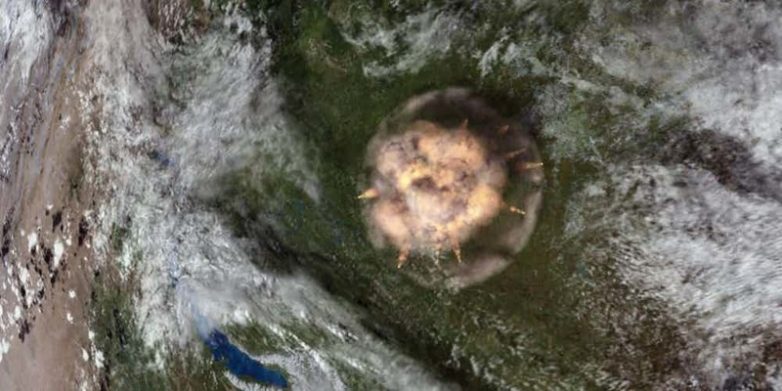
12. Vasyugan swamps
Vasyugan swamps are the largest swamp system in the Northern Hemisphere. The swamp area is 53 thousand km² (for comparison: the area of Switzerland is 41 thousand km²).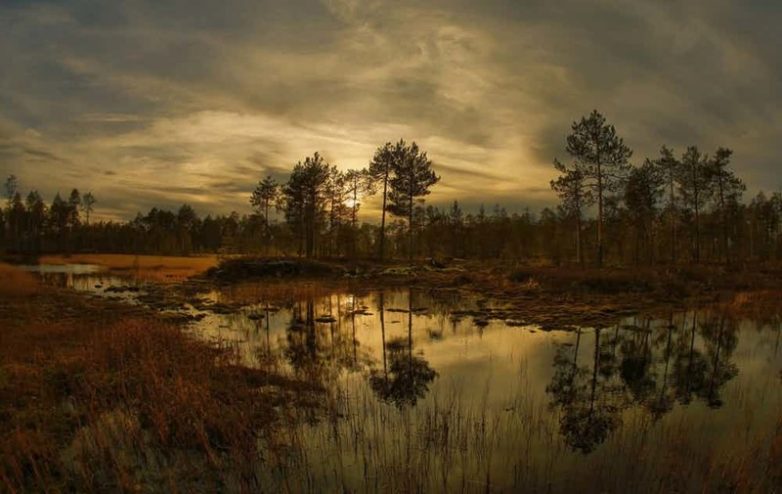
11. Wonderful world of permafrost
65% of the territory of Russia are permafrost regions. It is most widely distributed in Eastern Siberia and Transbaikalia. Under the conditions of the ongoing climate warming, the destruction of permafrost begins, it melts, releasing methane reserves from its cold depths and raising sea levels.
10. Rivers of Siberia
Four of the 10 longest rivers in the world flow in Siberia: the Ob, Amur, Lena and Yenisei. But the Daldykan River in the Norilsk region is also noteworthy. In September last year, the water in the river turned bright red due to the ingress of contaminated water from the Nadezhda metallurgical plant.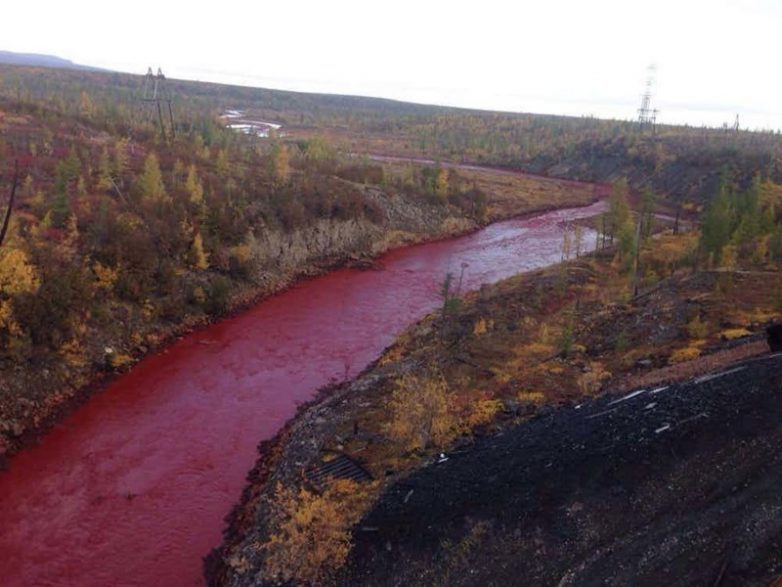
9. The most beloved dog breed in the whole world
The Siberian Husky is one of the oldest and most popular dog breeds in the world. It has a friendly and calm, but along with this lively character, it is adapted to great physical exertion, they are excellent as companion dogs, even for apartment keeping. Lifespan: 12 - 14 years.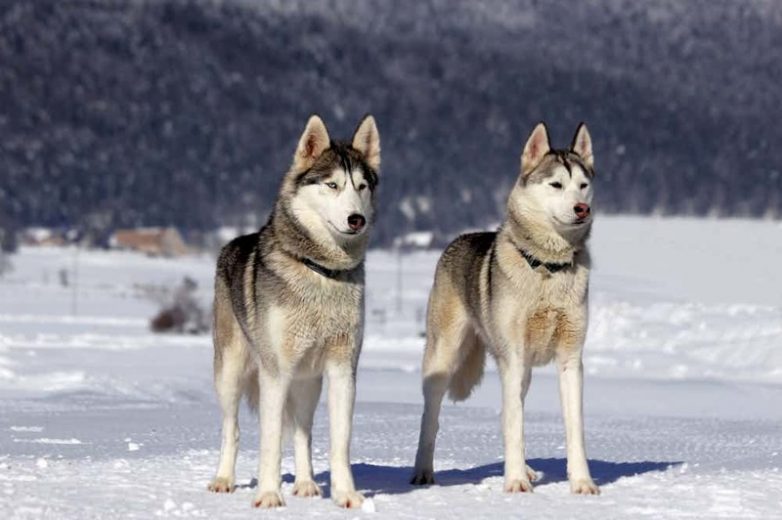
8. We came from Siberia
The Asian species Homo erectus (Human erectus) lived in Siberia. Homo erectus, according to genetic analysis, may well be our ancestors.
7. Our ancestors lived in Siberia
In 2008, in the Denisova Cave in the Soloneshensky district of the Altai Territory, a group of Russian researchers discovered the bone of the little finger. Then scientists suggested that these were the remains of a Neanderthal. However, a thorough genetic analysis showed that a previously unknown species of people had been found. The little finger about 50 thousand years ago was on the hand of a girl. Scientists called her "Woman-X". According to researchers, at least three human species - Homo sapiens, Neanderthal and this type, called Denisovans - could meet and enter into relationships with each other somewhere in southern Siberia.
6. Kemerovo: Utopia
In 1921, as part of a project to quickly revive the Russian economy, Kemerovo became an international industrial colony. The Kemerovo colony existed from 1922 to 1927; in just five years, 750 foreigners and 5,000 Russians worked here. The main language of communication at first was English. The experiment was a success, a large industrial enterprise was created.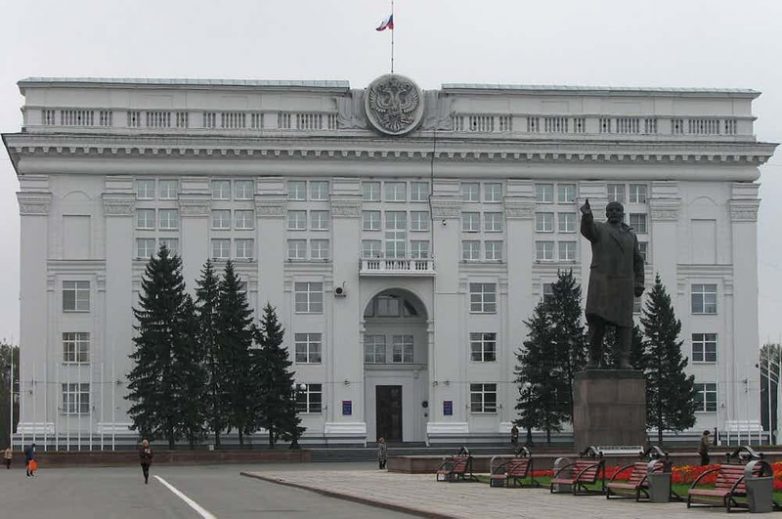
5. Siberian health
Indigenous Siberians are distinguished by good health and remarkable strength. Promote strong immunity natural conditions and hardening - winter swimming has always been popular among Siberians.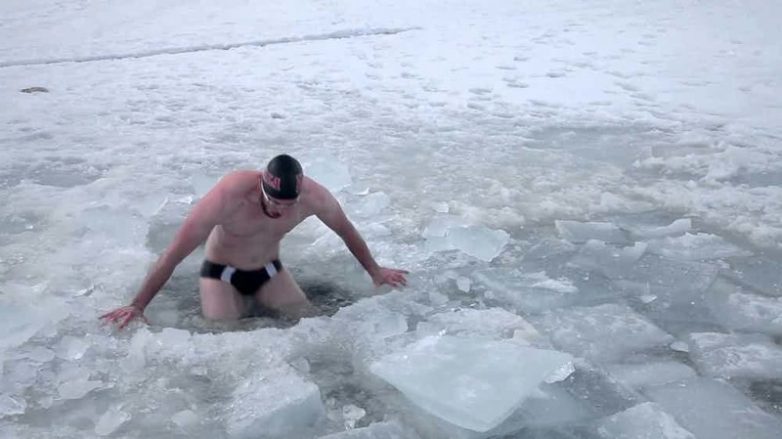
4. Superhumans
The endurance of Siberians is amazing. It is known that one man accidentally fell out of the train in 45-degree frost. A 7 km resident of Bratsk, wearing only a T-shirt and flip flops, ran along the tracks to the nearest station. Not only did he run to the station, he didn't even get sick!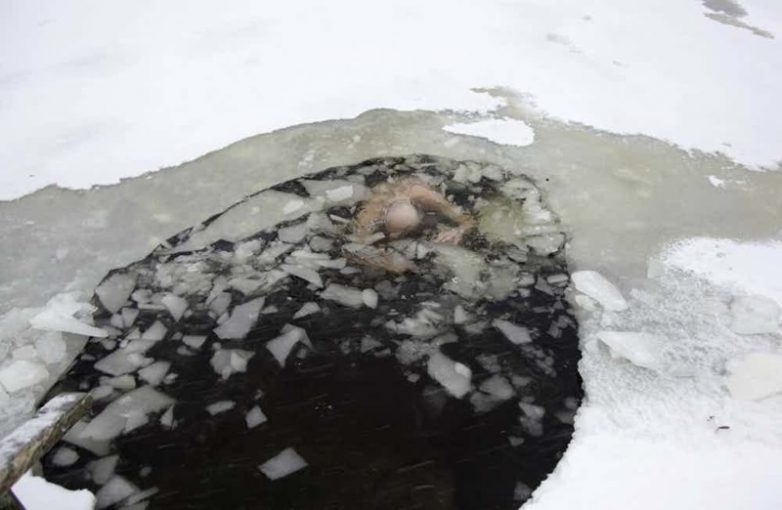
3. Driving in extreme conditions
Throughout the winter, Siberian motorists have to drive in conditions that no production car is simply designed for. And if the transport breaks down far from the settlement, then you can not even wait for help. Fortunately, people here will always come to the rescue.
2. Unicorns lived in Siberia
Fossilized remains of an unusual animal resembling a unicorn were discovered in Siberia. Ancient elasmosteria wore an impressive horn on their heads and lived on Earth 29 thousand years ago. That is, the unicorn lived in Siberia at the same time as prehistoric people!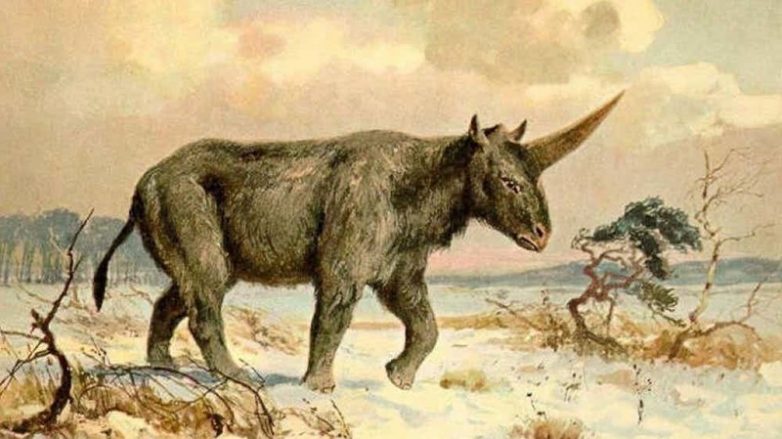
1. People are well settled in Siberia
People not only managed to learn how to survive in the harsh conditions of Siberia, they really like to live there. 20 degrees of frost is quite a comfortable temperature for Siberians, especially since they know how to dress warmly and properly. Siberia is really interesting for its nature, culture and history, as well as amazing people.